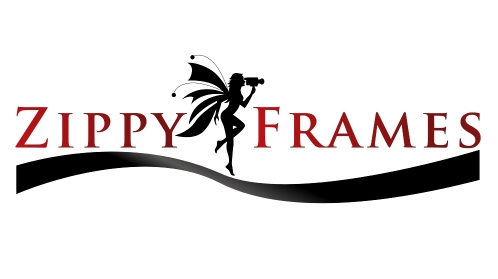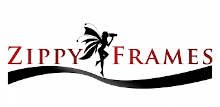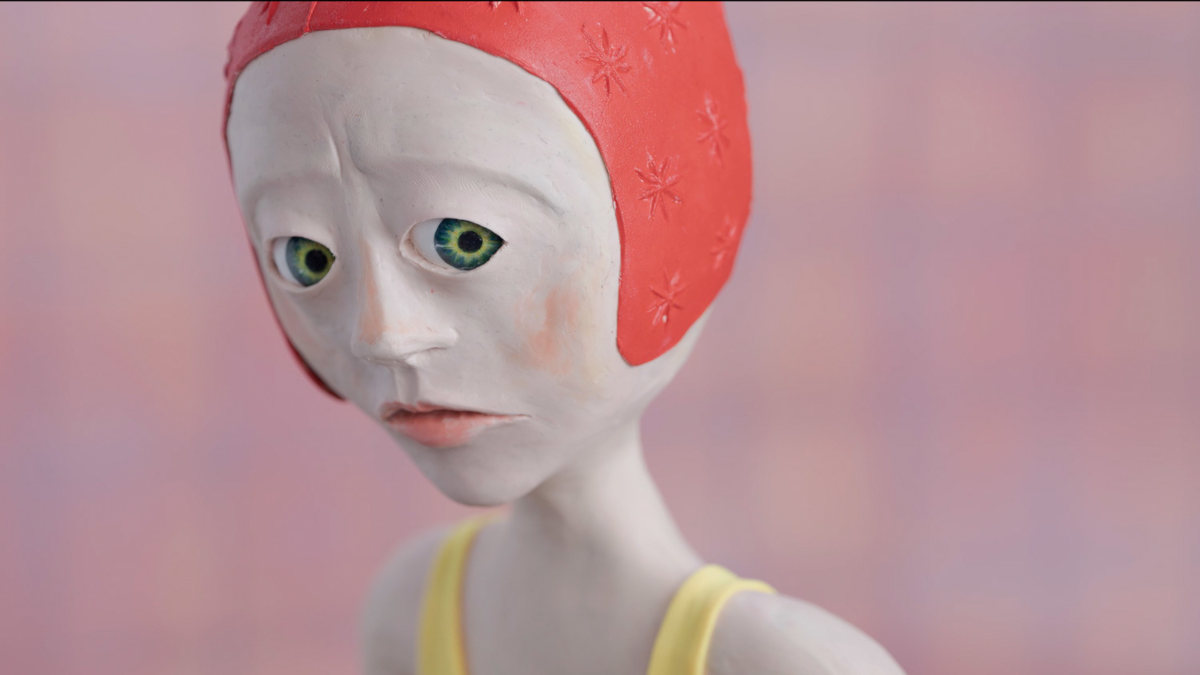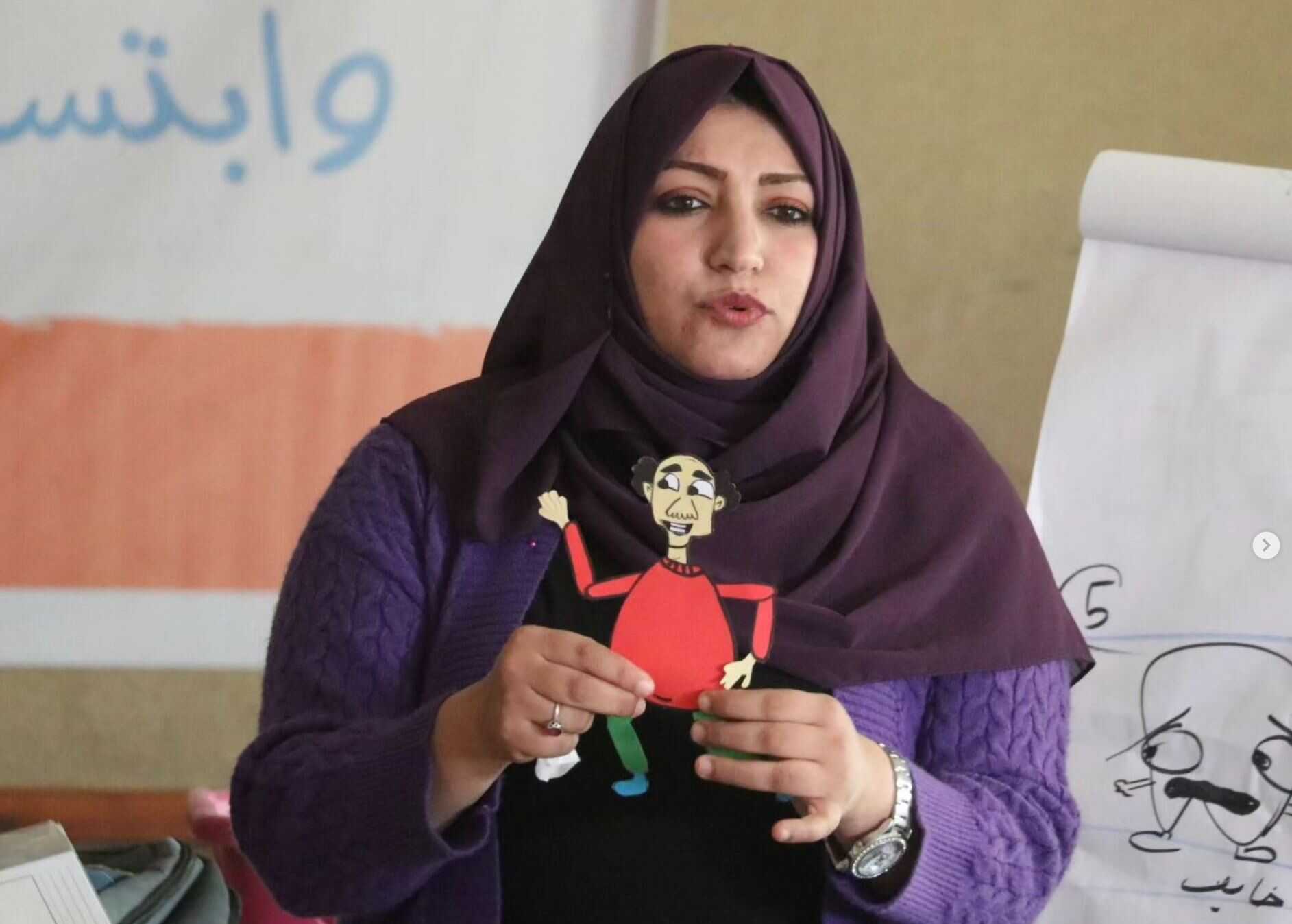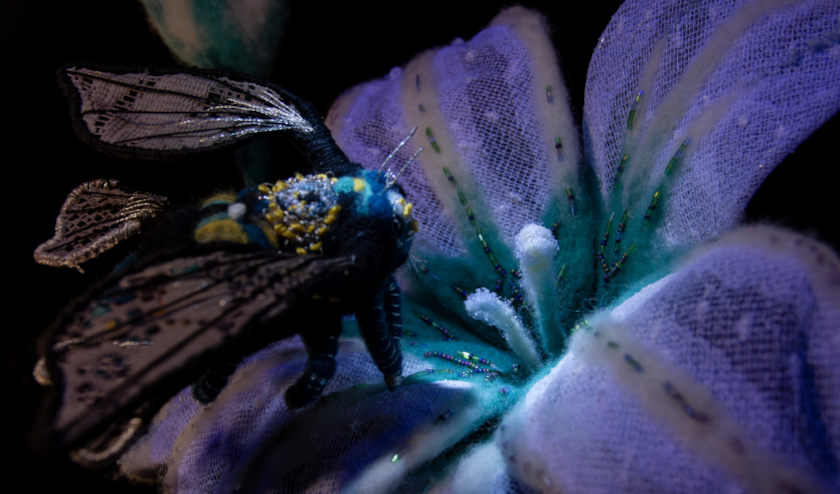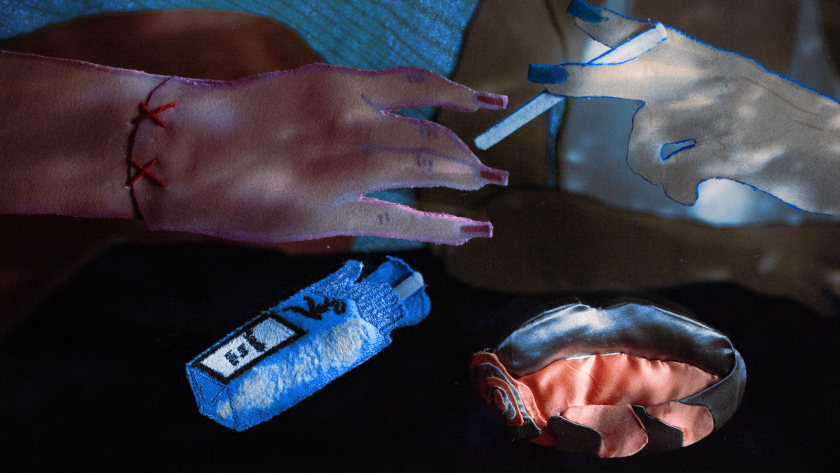'Perfect Sense' by Marcus Grysczok
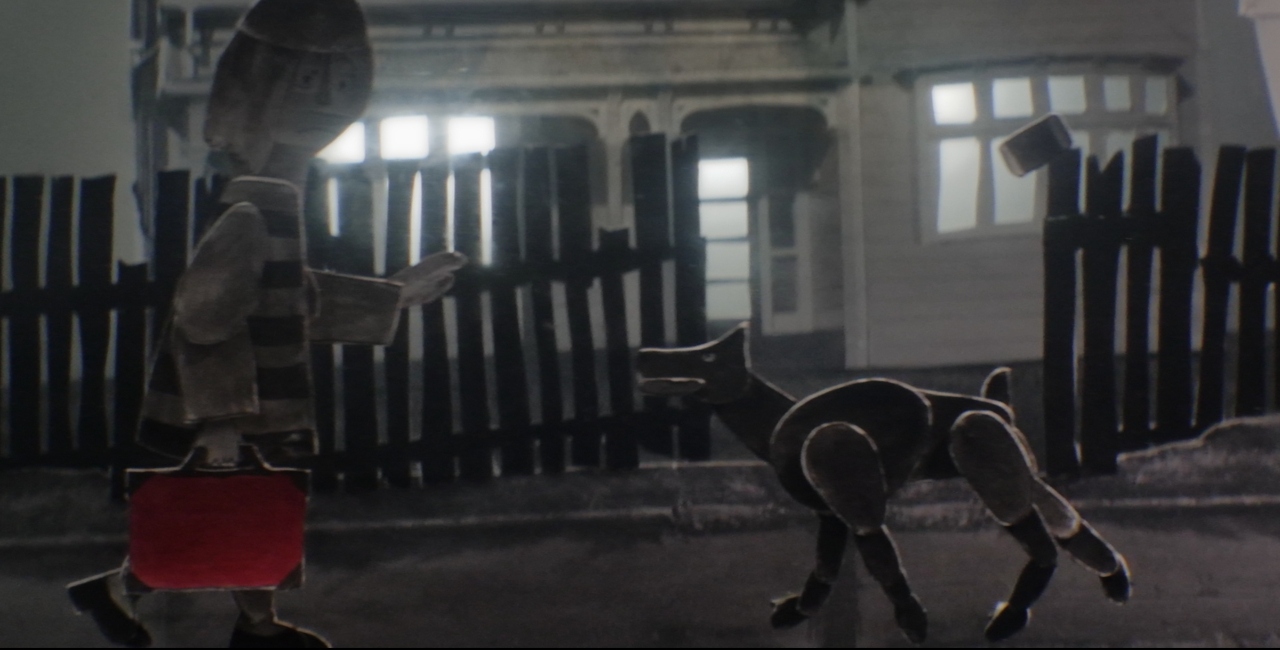
German stop-motion filmmaker and media artist Marcus Grysczok constantly investigates films at the intersection of human and natural challenges (‘Cain’, ‘Natural Facts’, ‘Broken Birds’). At the same time, he is an animation educator, organizing the Stop Motion Academy Workshop Festival and many animation workshops in between.
Grysczok’s upcoming projects, a music video for the song ‘Perfect Sense’ by The Autumn Sighs and a short film titled ‘Jolanda and the Red Bag’, showcase a set of shared themes and characters. The characters include a disillusioned filmmaker obsessed with finding the perfect idea and a mysterious young woman named Jolanda carrying a magnificent red suitcase. Jolanda shifts between worlds as she tries to escape the “camera-monster”, a mutated form of the filmmaker created as a result of his creative fixations.
With every scene, the story unfolds and grows more vivid through the interplay of stop-motion, cutout animation, and analog effects. The music video is a collaboration between Germany and New Zealand; Wellington-based art director Nika Beaton created the puppets and sets, while Grysczok completed the animation at Massey University in Wellington during a semester abroad for his master’s degree.
Zippy Frames: The theme of your characters taking their own life on screen is a very respectable one in both live-action and animation. How did the idea start, and what were your inspirations (if any)?
Marcus Grysczok: The character who drinks from the bottle and turns red isn't literally self-destructing; rather, he's succumbing to the allure of alcohol, which profoundly influences his creative process. His intoxication symbolizes the intoxicating rush of inspiration, where the boundaries between control and chaos blur. As he delves deeper into his creative fervor, his writing becomes increasingly unrestrained and emotionally charged, reflecting the unpredictable nature of artistic liberation. This portrayal serves as a metaphor for how, in moments of true creative freedom, ideas can spiral beyond our control, leading to a torrent of imagination that, while exhilarating, can also be overwhelming. Ultimately, the film explores the fine line between inspiration and obsession, highlighting the transformative power of art and the risks inherent in surrendering completely to one's creative impulses.
ZF: Are you fascinated by tales of identity, authorship, and the absurd, or did you consider this an assignment? I also guess that you had the music already in place before you started making the film.
MG: The project was more than just a commission for me—it was also an opportunity to visually bring my story to life. Much of what Jolanda and her red bag represent is rooted in my experiences as a young adult searching for my own sense of identity. While the question of authorship only emerged later, once I began to understand the workings of the film industry, I’ve always embraced the wild and absurd as the language through which I translate my personal “thought-code” into something universally felt. During that time, I learned how often the lines blur between what I create and what has shaped me.
We locked in the song early on, and it became a creative anchor throughout production. But what truly fascinates me is the question of where inspiration ends and true ownership begins: How much of a work genuinely belongs to its creator, and how much draws from collective memory, shared myths, or sheer serendipity? This inquiry drives my work and continues to shape every project I undertake.
ZF: This is a collaboration between two countries. Can you briefly detail who was responsible for each section and how the collaboration worked in practice? Did you have to hold many video conferences, or was everything done physically?
MG: The central collaborator on this project was Nika Beaton from Wellington, New Zealand, whom I met during a stop-motion workshop I conducted in 2023. Since then, we've collaborated remotely via video conferences and Google Drive, meticulously planning the entire pre-production phase. Nika was responsible for designing and constructing the puppets and sets, which we shipped internationally.
In 2024, I had the opportunity to undertake a semester abroad at Massey University in Wellington. There, I utilized my mobile stop-motion studio within the university facilities to animate. Nika's unique ability to craft immersive worlds and her expertise in building miniature puppets made her an invaluable partner. We employed magnets to animate the puppets beneath a glass plate, necessitating precise integration of magnetic components into the puppet design. This technique facilitated smooth and controlled movements, significantly enhancing the animation's overall quality.
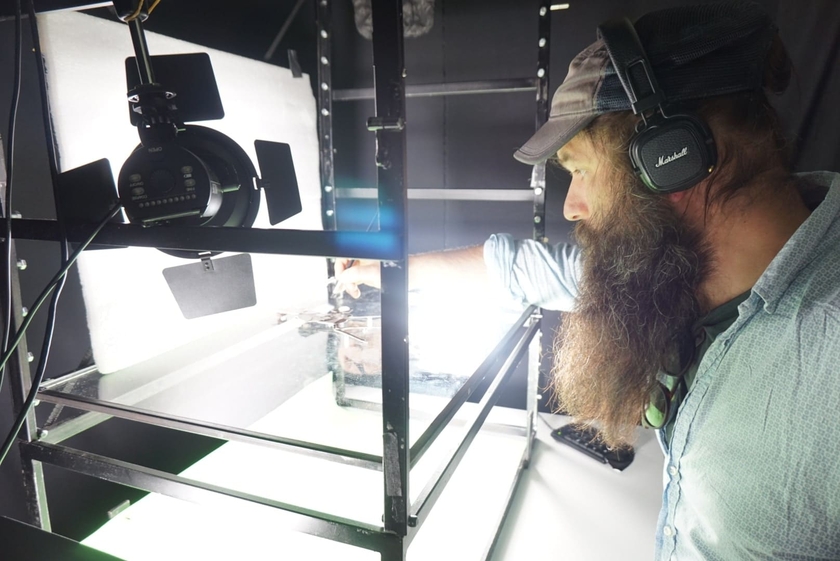
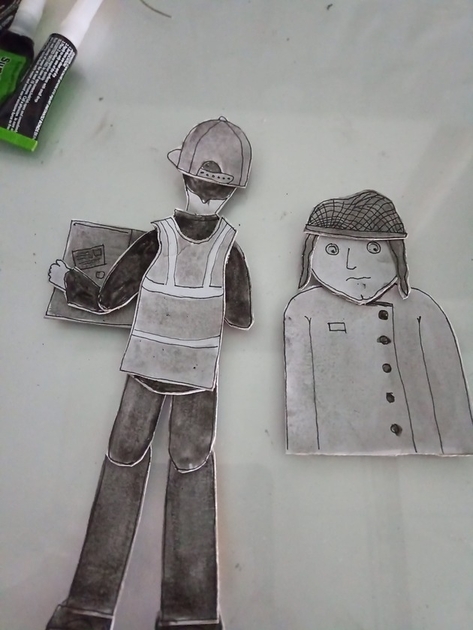
Making of 'The Perfect Sense' (New Zealand, 2024)
ZF: The film's visual style (or the sets) changes constantly, and there are many characters. What was the most challenging thing for you and your collaborators? Creating the puppets, animating, or editing/compositing?
MG: The film's visual style evolves organically, mirroring my own journey of aesthetic discovery and refinement. I embraced an experimental mindset in the early stages—mixing techniques and textures with an open-ended curiosity. This exploratory phase, developed in collaboration with Hayes Smith and Noah Joos at my studio in Erfurt, Germany, allowed different visual approaches to intertwine freely. As production moved forward—especially during my semester in New Zealand—the visual storytelling began to solidify.
Influenced by the distinct landscapes, atmospheres, and cultural nuances I encountered there, a more coherent visual language emerged for the film's second half. The central challenge was to bridge these contrasting phases—reconciling the raw, intuitive experimentation of the beginning with the visual continuity needed to fully support the narrative. While puppet fabrication, animation, and compositing each brought their own technical demands, it was the task of uniting these evolving styles into one cohesive cinematic world that proved most complex and rewarding.
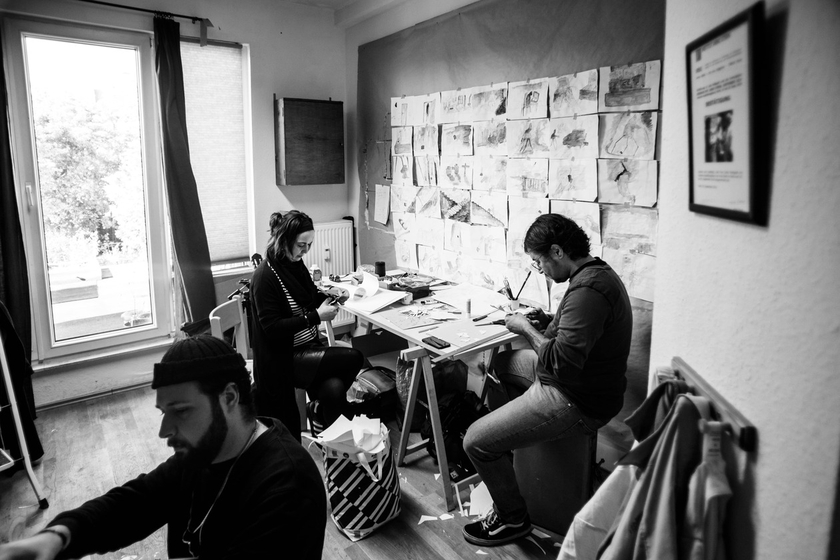
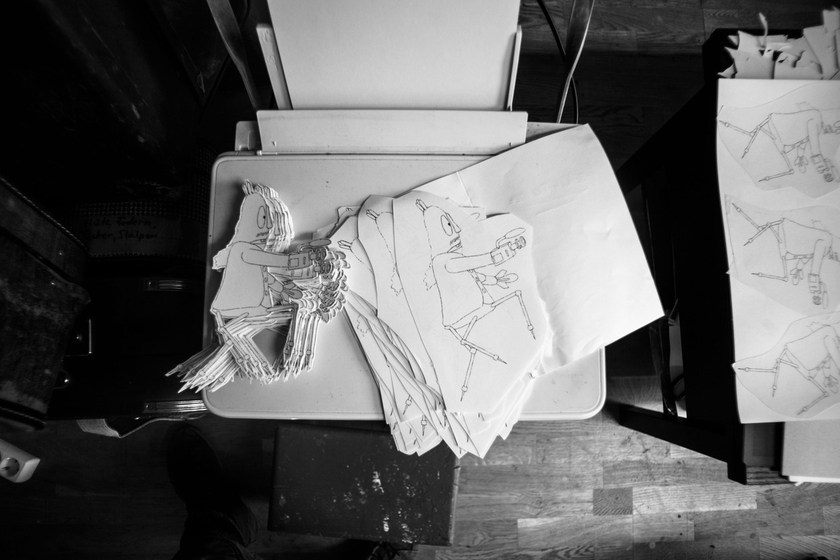
Making of 'The Perfect Sense'
ZF: We all want to identify with the created girl with the suitcase; she's the hunted one. But what do you think of the other character who morphs into her opponent? Do you feel any sympathy for him?
MG: Of course, the filmmaker character is my alter ego. Through him, we experience the search for the "fantastic story"—a journey constantly shifting between fascination and obsession. He’s not a villain in the traditional sense, but a mirror of the artist’s inner struggles: the fear of failure, the hunger for creation, and the loss of control when imagination takes over. I have a lot of sympathy for him because he’s trapped in a paradox—chasing something pure and beautiful, but becoming consumed by it. His transformation into a “camera-monster” symbolizes the danger of letting ambition overpower the heart of creativity.
ZF: The film ends with the 'to be continued" motto. So, what is the film's future for you?
MG: There will be a second music video, “Underneath” by the band The Autumn Sighs, in which the story continues. Until the chase seems almost over, Jolanda has the chance to escape, the showdown takes place at the old cinema, and the reference is the Roxy Cinema in Wellington. Furthermore, I made Jolanda and the director the center of my final film at university, and ‘Jolanda and the Red Bag’ is the attempt at liberation, of personal and artistic dreams.
Watch 'Perfect Sense'
This atmospheric cutout film captures in a very congenial way the indecisive moments between majestic creation and majestic destruction. Its anxiety, amplified by the fragile paper cutouts and its noir look, permeates the story -along with the musical beats of The Autumn Sighs. A musical adventure to watch closely and immerse into.
About Marcus Grysczok:
Marcus Grysczok is a stop-motion filmmaker and media artist based in Erfurt, Germany. His work explores handcrafted storytelling through animation and physical media, emphasizing the emotional connection people feel towards tangible, imperfect worlds. Through tactile techniques, he invites audiences to experience animation not only visually but also emotionally, creating a sense of intimacy, nostalgia, and human touch.
He is currently completing an MFA in Media Arts & Design at Bauhaus University Weimar, where he has also taught as a student lecturer. His next animated short film, ‘Jolanda & the Red Bag’, is an international collaboration with Aotearoa artist Nika Beaton. Grysczok has conducted stop-motion workshops at Massey University in Wellington, contributed to the ANIBAR Festival in Kosovo, and led animation workshops at numerous schools across Germany. He is also the founder of the artist-run Stop Motion Academy - Workshop Festival, promoting creative education through animation. He is committed to fostering creative communities through education, international exchange, and film.
